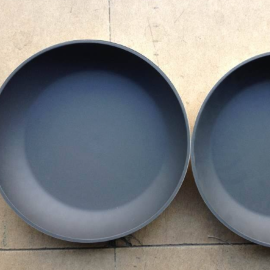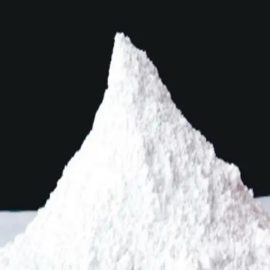A high-temperature release agent is a special coating used in high-temperature environments, it can effectively reduce the temperature of the mold surface, prevent the adhesion between the product and the mold, and improve production efficiency. How does silicone mold release agent release mold at high temperature?
The principle of high-temperature release of silicone mold release agent is to soften plastic or rubber at high temperatures. When plastic or rubber is heated to a certain temperature, the chemical bonds within the molecules begin to decompose, the molecular chain breaks, the relaxation increases, the expansion and softens, and eventually reaches plasticity. After the desired shape is formed in the mold, it can be demolded when the temperature decreases and reaches a certain hardness. As the temperature of the plastic or rubber drops, its shape remains in the mold and can retain the desired shape after easy-release demolding.
There are seven aspects to introducing silicone mold release agents:
- How does a mold release agent work?
- What are the mold release agents?
- What is a silicone mold release agent?
- What is the use of silicone mold release agent?
- What are the precautions for the use of high-temperature release agents?
- What is the working process of silicone mold release?
- How to make silicone mold releases perform better?
1. How does a mold release agent work?
Rubber plastics are molded in molds, and when they come into contact with the mold surface, frictional resistance is generated by micro-defects in the mold, and negative pressure or physical/chemical bonding tends to be formed during processing, leading to difficulties in mold release. As an interfacial isolation layer, the release agent can effectively weaken the adsorption force between the product and the mold, simplify the demolding process, and ensure that the product can be detached smoothly.
![]()
2. What are the mold release agents?
Focusing on the chemical industry, especially the rubber and plastic molding process, mold release agent is the main object of discussion. The base materials of mold release agents cover inorganic materials (such as graphite powder, and talc), organic materials (such as fatty acids, and waxes), and polymers (such as polyvinyl alcohol, and silicone polymers), of which silicone polymers are preferred due to their superior performance.
Mold-release agents are divided into two categories: solid and liquid. Solid forms are limited in application due to the inconvenience of handling and the tendency to contaminate the surface of the product. Liquid mold release agents are more common, including pure polymer liquids, solutions, emulsions, pastes and aerosols, and other forms, according to the formula to add solvents, emulsifiers and other components. After coating, can form a liquid film or directly cured into a film, to adapt to the different needs of mold release.
![]()
3. What is a silicone mold release agent?
A silicone release agent is a commonly used mold coating material, which can be cured into hard mold surfaces for multiple part releases under high-temperature conditions and is very convenient to use.
The curing principle is mainly realized by oxidation reaction. Silicone release agent contains a large number of silicone monomers and oxidizing agent, under high-temperature conditions, the oxidizing agent will oxidize the silicone monomer, resulting in a large number of silicon-oxygen bonding, thus making the coating material curing a thin layer.
During the curing process, silicone mold release agent also produces a large amount of carbon dioxide and water, these substances can be discharged through evaporation, thus making the curing process smoother.
In general, the curing principle of silicone mold release agents is achieved through an oxidation reaction that causes silicone monomers to form silicone-oxygen bonds. This process can be carried out at high temperatures so that the curing efficiency of the release agent can be improved.
![]()
4. What is the use of silicone mold release agent?
(1) Clean the surface of the mold:
Before using the high-temperature release agent, first make sure that the surface of the mold is clean and smooth, you can use alcohol or other cleaning agents to wipe the mold surface clean, and then dry the water with a dry cloth.
(2) Coating high-temperature release agent:
Pour the silicone release agent into a spray bottle or brush and evenly coat the surface of the mold, be careful not to coat too thick, so as not to affect the effect of the release, and make sure that the coating evenly covers the entire surface of the mold when applying.
(3) Waiting for drying:
After coating, let the silicone mold release agent dry naturally, the drying time is generally 30 minutes to 1 hour, the specific time according to the construction environment and the thickness of the coating, the drying process should be avoided to avoid direct sunlight and wind, so as to avoid the coating drying too quickly resulting in a decline in performance.
(4) Try new products:
when the silicone release agent is dry, you can try to use new products for production, if the release effect is good, you can formally put it into use.
![]()
5. What are the precautions for the use of high-temperature release agents?
(1) Choose the right high-temperature release agent: choose the right high-temperature release agent according to the production process and product characteristics to ensure the release effect, silicone resin high-temperature release agent is suitable for most of the production processes and products.
(2) Avoid mixing with other chemicals: High-temperature mold release agent has strong chemical stability, but it does not mean that it can be mixed with all chemicals.
(3) Storage precautions: High-temperature mold release agent should be stored in a cool, dry, and well-ventilated place, avoiding direct sunlight and high temperature, the opened high-temperature mold release agent should be used up as soon as possible, avoiding long-term exposure to the air leading to performance degradation.
(4) Regularly check the coating condition: After using a high-temperature release agent for a period of time, the coating condition on the surface of the mold should be checked regularly, and if there is any breakage or peeling phenomenon, it should be repaired in time to ensure the effect of mold release.
XJY-RA/XJY-RAN MQ Silicone Resin is a polymerization of tetrafunctional silicon (Q) and monofunctional methyl silicon (M) in the field of silicone high-temperature, semi-permanent and permanent mold release agents. Silicone mold release agents are specially formulated to be resistant to high and low temperatures, have low surface tension, and are non-corrosive to metals. Adding silicone resin (5-15%) can significantly improve the strength of the silicone oil film, in the field of high-temperature casting and other areas of good application.

6. What is the working process of silicone mold release?
High-temperature mold release is a common production process, which can make the processing of plastic and rubber in the mold to form the desired shape. The working process of high-temperature demolding is as follows:
(1)Injection pressure: The injection molding machine conveys the melted plastic or rubber into the mold by pressure.
(2)Heating the mold: The mold is heated to a high temperature so that the plastic and rubber can be formed in the mold.
(3)Pressurizing: The plastic or rubber in the mold is pressed and held in that shape at a high temperature.
(4)Cooling: The temperature of the mold is reduced, cooling the plastic or rubber and hardening it.
(5)Release: The mold is opened and pressure is used to push the plastic or rubber out of the mold.
![]()
7. How to make silicone mold releases perform better?
High-temperature mold release is widely used in the manufacturing industry to produce plastic and rubber products, such as automotive parts, electronics housings, and appliance parts. Through high-temperature mold release, products can be made in precise shapes and sizes for consistent and efficient production. In a nutshell, heat release is a production process that softens materials at high temperatures and forms the desired shape in a mold. It is based on the principle of using high temperatures to soften plastic or rubber in order to achieve malleability. High-temperature mold release is widely used in various industries for efficient and consistent production, also suitable for silicone rubber. How to improve the competitiveness of your products specially formulated?
XJY Silicones is one of the leading silicone MQ resin and VMQ silicone manufacturers in China, with more than 30 years of R&D and manufacturing experience in the silicone industry as well as more than 15 related patents and technical support. Our silicone raw material products can meet the needs of the release field and support the provision of diversified customized solutions.
![]()


